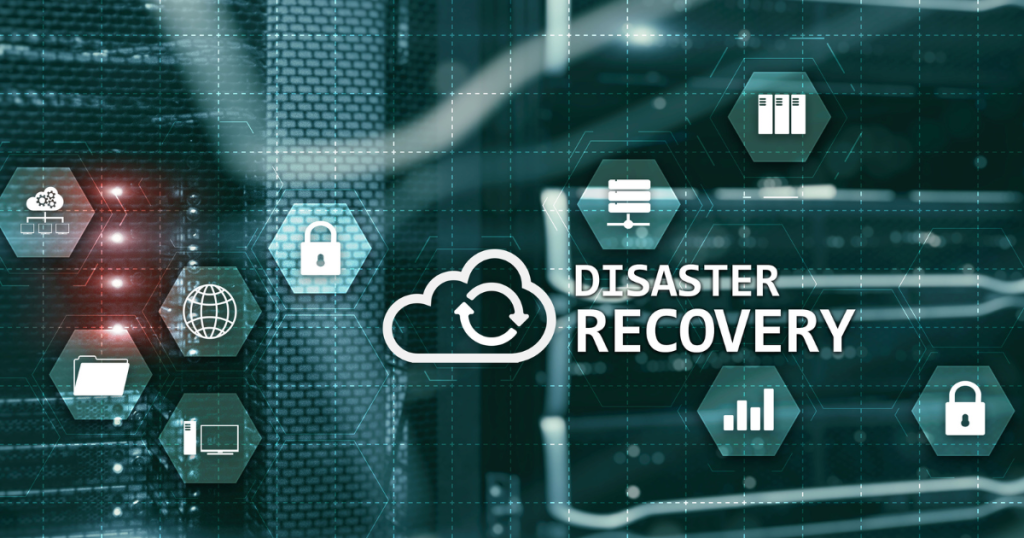What Happened This Morning
At 3:11 AM Eastern Time today, Amazon Web Services experienced a catastrophic outage that sent shockwaves across the internet.
The AWS Outage underscored a critical vulnerability in centralized cloud architecture, as millions of systems relying on AWS’s control plane went dark simultaneously.
Within hours, millions of users worldwide couldn’t access critical services:
- ChatGPT went offline during peak business hours
- Snapchat users couldn’t send messages
- Delta and United Airlines couldn’t check passengers in
- Ring doorbells stopped working
- Fortnite and Roblox kicked millions of players offline
- Financial platforms like Robinhood froze trading
- Thousands of business applications ground to a halt
The problem? A DNS resolution and gateway path failure tied to the DynamoDB API endpoint in AWS’s US-EAST-1 region in Northern Virginia—the same data center hub that powers roughly 32% of the global cloud infrastructure market. This extraordinary concentration fundamentally alters the risk profile for every global digital entity, creating systemic vulnerability that affects millions of organizations simultaneously.
This control plane failure effectively gave the internet temporary amnesia: Amazon had the data safely stored, but systems globally could not find the DNS records necessary to access it.
As of the time of this publication, AWS has not released a formal Post-Event Summary detailing the comprehensive root cause—underscoring the lack of transparency and control organizations have over these critical dependencies.

The Real Cost of Today’s Outage
Let’s be direct about what this morning’s disruption actually cost businesses:
Lost Revenue
For major e-commerce platforms, downtime costs an estimated $34 million per hour. Even for mid-sized businesses, an outage during peak hours can mean tens of thousands in lost sales.
Customer Trust Damage
When your customers can’t access your service, they don’t blame AWS. They blame you. Every minute offline erodes the trust you’ve spent years building.
Operational Chaos
Your team scrambled this morning—fielding angry customer calls, posting status updates, and trying to figure out if the problem was on your end or theirs. That’s hours of productivity lost.
Competitive Disadvantage
While you were down, your competitors who diversified their infrastructure stayed online. They served your frustrated customers.
This Isn’t an Isolated Incident
Today’s outage is part of a disturbing pattern:
- December 2024: AWS Cognito authentication failure left thousands unable to log into applications
- July 2024: CrowdStrike software update crippled Microsoft systems globally, canceling thousands of flights
- 2021-2024: AWS has published multiple post-event summaries for major outages affecting US-EAST-1
As one cybersecurity professor told reporters: “When a major cloud provider sneezes, the Internet catches a cold.”
The problem isn’t just that outages happen—it’s that shared infrastructure creates cascading failures that affect millions of organizations simultaneously.

The Hidden Risk in Shared Infrastructure
Today’s AWS outage revealed something critical: you don’t control your infrastructure.
The Multi-Tenant Problem
In public cloud environments like AWS, your business shares servers, storage, and network resources with countless other organizations. When a control plane service fails—like the DNS resolution issue that caused today’s outage—everyone goes down together.
Think about that for a moment. Your business continuity depends on Amazon’s ability to manage tens of thousands of other tenants without making a mistake.
The Single Point of Failure
Despite having multiple “availability zones,” AWS services share core dependencies. Today’s incident started with a DynamoDB API endpoint and DNS gateway failure. That single point of failure cascaded across:
- EC2 compute instances
- Lambda functions
- CloudWatch monitoring
- S3 storage access
- And dozens of other services
Your disaster recovery plan is only as good as AWS’s control plane reliability. And as we saw this morning, that reliability has limits.
The Shared Security Paradox: You Own 100% of the Risk
In public cloud environments, security operates under a Shared Responsibility Model. Here’s what that actually means:
What AWS Secures:
- Physical data centers
- Hypervisors and host operating systems
- Network infrastructure
What You’re Responsible For:
- Your data security and encryption
- Access management and configuration
- Compliance and regulatory adherence
- Application security
The uncomfortable truth? While AWS secures the infrastructure, you retain 100% liability for security in the cloud—including your data, configuration, and access management.
Misconfigurations remain a leading cause of data breaches. Accidentally leaving storage buckets open, failing to encrypt volumes, or misconfiguring access controls—these are your responsibility, even when the data resides on AWS servers.
For regulated industries (healthcare, financial services), this creates a compliance nightmare: You’re accountable for protecting HIPAA, PII, and financial data, but you don’t control the underlying infrastructure where that data lives.
Why Public Cloud SLAs Create a False Sense of Security
Here’s the uncomfortable truth about public cloud Service Level Agreements: they’re designed to limit provider liability, not protect your business.
The Compensation Gap That Should Terrify You
When a major retailer experiences downtime:
- Lost revenue: $34 million per hour
- Brand damage: Immeasurable
- Customer trust erosion: Permanent
When AWS fails its SLA:
- A typical EC2 instance costs: ~$3/month
- Downtime threshold (99.5% SLA): 3.5 hours/month
- AWS compensation offered: 10% service credit
- Your actual payout: $0.30 in service credits (not cash)
Read that again. $34 million in losses. 30 cents in compensation.
The process to even get that 30 cents:
- You measure the downtime yourself
- You submit evidence within a specific window
- You receive service credits (not cash refunds)
- There’s no compensation for lost revenue, brand damage, or regulatory fines
The bottom line: No infrastructure provider will compensate you for actual business losses. That’s why prevention matters more than compensation. The only real protection is infrastructure designed to avoid catastrophic failures in the first place.
AWS’s shared control plane architecture creates systemic risk that no SLA can adequately address. You can’t compensate your way out of architectural vulnerability.
The Exit Tax: Vendor Lock-In by Design
Beyond day-to-day cost volatility, public cloud providers employ restrictive business tactics designed to prevent you from leaving. This is known as vendor lock-in.
The biggest financial deterrent? Data egress fees—massive charges incurred for transferring your own data out of their environment.
These aren’t minor costs. Organizations report that egress fees can represent 10-25% of their total cloud spend. For high-data enterprises, these exorbitant exit costs effectively hold you financially captive, limiting your agility and making a strategic pivot prohibitively expensive.
You’re not just paying for infrastructure—you’re paying for the privilege of being trapped.
The Private Cloud Alternative
Organizations frustrated with public cloud reliability are making a strategic shift: dedicated private cloud infrastructure.
What Makes Private Cloud Different?
Architectural Isolation Your workloads run on dedicated hardware that isn’t shared with other companies. A failure in someone else’s environment never affects your operations.
Eliminated Blast Radius When AWS’s US-EAST-1 region fails, it creates a global blast radius affecting millions of services. With a private cloud, failures are contained to your isolated infrastructure—and you control the redundancy.
Guaranteed Data Residency and Sovereignty Your data remains within specified U.S. geographic boundaries. This provides the clear data residency and legal control required for highly regulated industries (financial services, healthcare) and eliminates the jurisdictional ambiguity inherent in public cloud environments where data might be replicated across multiple international locations without your knowledge.
Geographic Redundancy You Control Instead of hoping AWS’s multi-region strategy protects you, you choose exactly where your redundant systems live. At Nu-Age, we operate Tier-3 data centers in both Secaucus, NJ and Orlando, FL—providing true geographic diversity across the Eastern U.S. for disaster recovery. When one region experiences issues, your operations continue uninterrupted from the other location.
Predictable Costs No surprise egress fees. No hidden charges when you move data between services. Just transparent, fixed monthly pricing based on your dedicated resources.
The Hidden Cost Structure: Why Public Cloud Gets More Expensive Over Time
Industry analysis reveals that for persistent, stable workloads (the kind that power established businesses), public cloud TCO is significantly higher than alternatives.
According to IDC research, organizations running stable workloads on public cloud infrastructure experience:
- 30-50% higher costs compared to private cloud over a 5-year period
- Unpredictable monthly variance of 15-40% due to usage-based billing
- Data egress fees that can represent 10-25% of total cloud spend
- Hidden charges for API calls, monitoring, and inter-service data transfer
The break-even point for private cloud viability? As few as 400-500 virtual machines under proper management—making this strategy relevant for mid-market enterprises, not just Fortune 500 companies.
What This Means for Your Business
If you’re running mission-critical workloads on AWS with consistent utilization:
✓ Private cloud delivers 30-50% lower TCO over 5 years ✓ Fixed monthly costs eliminate budget surprises ✓ Zero egress fees when moving data between services ✓ Transparent pricing based on dedicated resources, not consumption
The question isn’t whether private cloud saves money—it’s whether you’re ready to stop overpaying for shared infrastructure that just proved it can fail catastrophically.
How Nu-Age Keeps Your Business Online
The Nu-Age Group has been protecting businesses from infrastructure failures for 28 years. Here’s how our private cloud approach delivers the resilience that public cloud can’t:
99.9% Uptime SLA Backed by Superior Architecture
We guarantee 99.9% uptime not through compensation promises, but through architectural design that prevents failures. Our isolated, redundant infrastructure eliminates the shared control plane vulnerabilities that caused today’s AWS outage.
The difference: AWS’s SLA compensates you after failure. Our architecture is designed to prevent the failure from happening in the first place.
Redundant Tier-3 Data Centers in NJ and FL
Your critical systems replicate between our Secaucus, NJ and Orlando, FL data centers—providing the true multi-region resilience that AWS’s single control plane couldn’t deliver today. If one location experiences issues, automated failover ensures zero interruption to your operations.
This isn’t theoretical. While AWS’s Northern Virginia data center failure took down services globally, our clients with systems distributed across both Nu-Age locations experienced zero downtime.
SOC 2 Type 2 and HIPAA Compliance Built In
Healthcare providers, financial services firms, and regulated industries can’t afford compliance gaps. Our certified infrastructure ensures you stay audit-ready at all times.
AI-Powered Proactive Monitoring
Instead of reacting to outages, our AI-driven monitoring predicts potential issues and prevents them before they impact your business.
No Vendor Lock-In
Unlike public cloud platforms that trap you with proprietary services and massive egress fees, our private cloud gives you complete data ownership and portability. Your data, your control.

Who Benefits from Private Cloud?
Healthcare Organizations
When your electronic health records go offline, patient care stops. Our HIPAA-compliant private cloud ensures your clinical systems stay online with near-zero recovery time objectives. Healthcare providers across the New York Metro area and Orlando trust our certified infrastructure for mission-critical patient data.
Financial Services Firms
CLO managers, asset management firms, and financial institutions need data sovereignty, audit readiness, and predictable costs. Our SOC 2 Type II certified infrastructure delivers compliance confidence without public cloud uncertainty. Financial services firms in the tristate area benefit from our Secaucus, NJ data center’s proximity and regulatory-grade security.
Mid-Market Businesses
If your revenue depends on consistent uptime, you can’t afford to share infrastructure with thousands of unknown companies. Private cloud becomes cost-effective at just 400-500 virtual machines—accessible for growing enterprises across the New York Metro, Orlando, and beyond.
Any Organization Tired of Outages
If today’s AWS disruption affected your business, you’re experiencing exactly why leading organizations are diversifying away from single-provider dependency.
The Bottom Line
Today’s AWS outage cost businesses millions of dollars in lost revenue, damaged customer relationships, and wasted productivity.
For some organizations, it was a frustrating inconvenience. For others, it was a wake-up call.
The question isn’t whether another major public cloud outage will happen—it’s whether your business will be affected when it does.
Private cloud infrastructure eliminates your exposure to shared infrastructure failures. You gain:
✓ Architectural isolation from multi-tenant risks
✓ Geographic redundancy you control
✓ Predictable costs without surprise fees
✓ True disaster recovery capabilities
✓ Compliance-ready infrastructure
✓ 24/7 expert support from a U.S.-based team
Every day on shared infrastructure is another day your business depends on Amazon’s ability to manage millions of other tenants without making a mistake.
Take Control of Your Infrastructure
The Nu-Age Group has been protecting businesses from exactly this kind of disruption since 1997. We’ve helped healthcare providers, financial services firms, and growing businesses across New York Metro, Orlando, and beyond eliminate their exposure to public cloud systemic risk.
Stop depending on shared infrastructure. Start controlling your own resilience.
Frequently Asked Questions About AWS Outages and Private Cloud
What caused the AWS outage on October 20, 2025?
A DNS resolution and gateway path failure in the DynamoDB API endpoint caused the outage in AWS’s US-EAST-1 Northern Virginia region, affecting approximately 32% of global cloud infrastructure.
How much does an AWS outage cost businesses?
Major e-commerce platforms lose an estimated $34 million per hour during AWS outages. Mid-sized businesses can lose tens of thousands in revenue during peak hours.
Does AWS compensate for outage losses?
AWS provides only 10% service credits (approximately $0.30 for a typical $3/month instance) when SLAs are breached. There is no compensation for lost revenue, brand damage, or regulatory fines.
What is private cloud infrastructure?
Private cloud is dedicated infrastructure exclusively serving a single organization, eliminating the shared resource risks of public cloud while providing predictable performance and costs.
When does private cloud become cost-effective?
Private cloud typically becomes economically viable at 400-500 virtual machines with consistent utilization, delivering 30-50% cost savings over 5 years compared to public cloud.
How does private cloud prevent AWS-type outages?
Private cloud eliminates shared control plane dependencies. With geographic redundancy across independent data centers (like Nu-Age’s NJ and FL locations), when one region has issues, operations continue uninterrupted.
Schedule Your Free Cloud Infrastructure Assessment
Our team will evaluate your current cloud architecture, identify single points of failure, and show you exactly how private cloud can eliminate your exposure to incidents like today’s AWS outage.
Or call us directly: 866.640.3999
The Nu-Age Group | Minimizing Risk. Maximizing Business.
SOC 2 Type 2 Certified | HIPAA Compliant | 28+ Years of Enterprise IT Excellence
Tier-3 Data Centers in Secaucus, NJ and Orlando, FL
Related Resources
Published October 20, 2025 | Last updated: 10:00 AM ET









